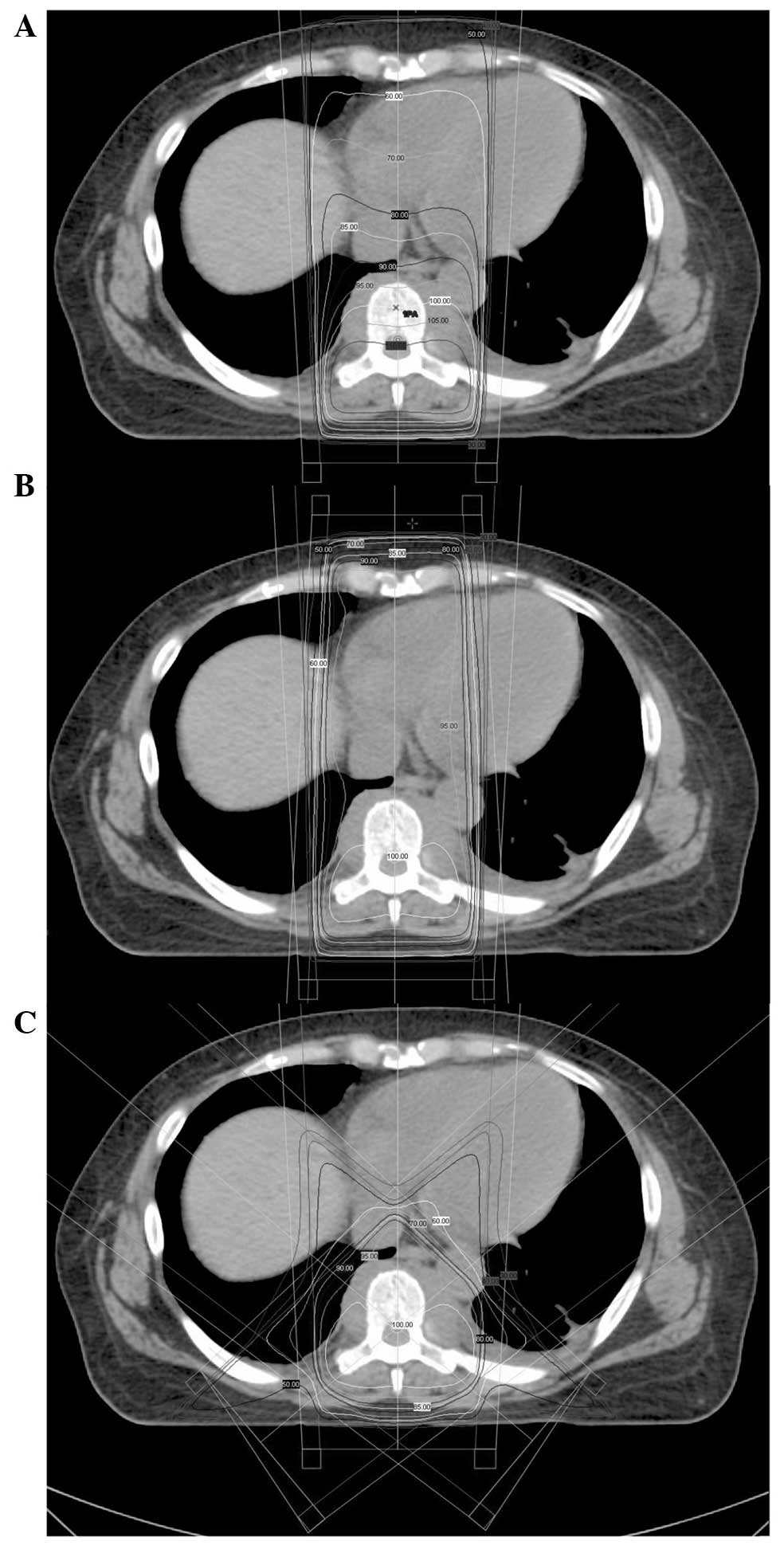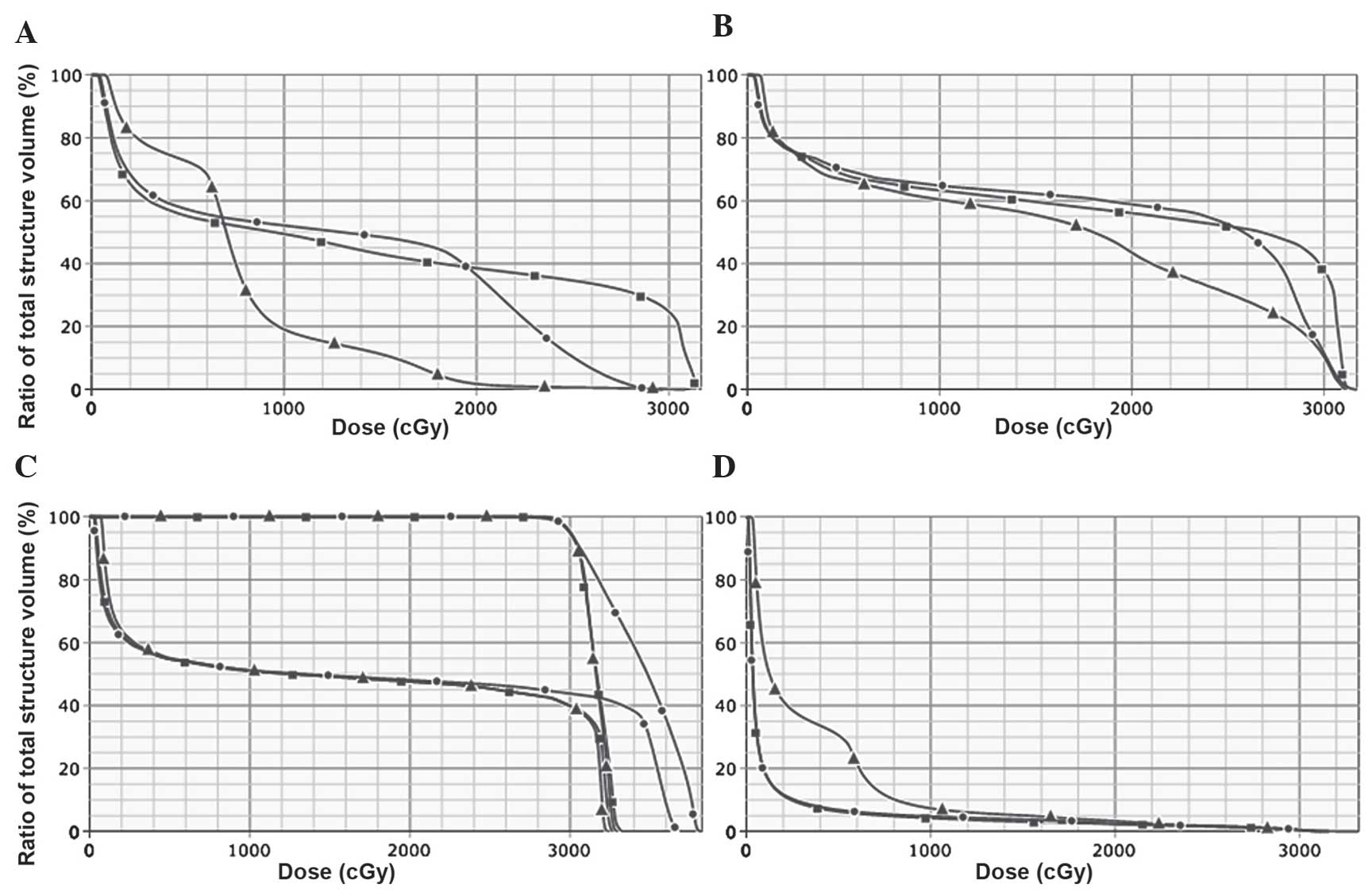|
1
|
Coleman RE: Clinical features of
metastatic bone disease and risk of skeletal morbidity. Clin Cancer
Res. 12:6243s–6249s. 2006. View Article : Google Scholar : PubMed/NCBI
|
|
2
|
Lutz S, Berk L, Chang E, Chow E, Hahn C,
Hoskin P, Howell D, Konski A, Kachnic L, Lo S, Sahgal A, et al:
Palliative radiotherapy for bone metastases: An ASTRO
evidence-based guideline. Int J Radiat Oncol Biol Phys. 79:965–976.
2011. View Article : Google Scholar : PubMed/NCBI
|
|
3
|
Chow E, Hoskin P, Mitera G, Zeng L, Lutz
S, Roos D, Hahn C, van der Linden Y, Hartsell W and Kumar E:
International Bone Metastases Consensus Working Party: Update of
the international consensus on palliative radiotherapy endpoints
for future clinical trials in bone metastases. Int J Radiat Oncol
Biol Phys. 82:1730–1737. 2012. View Article : Google Scholar : PubMed/NCBI
|
|
4
|
Soyfer V, Corn BW, Shtraus N, Schifter D
and Tempelhof H: The advantage of 3D conformal treatment of lumbar
spine metastases in comparison to traditional PA or AP-PA
techniques: Restoring an intermediate niche of therapeutic
sophistication. Radiat Oncol. 8:342013. View Article : Google Scholar : PubMed/NCBI
|
|
5
|
Guadagnolo BA, Huo J, Liao KP, Buchholz TA
and Das P: Changing trends in radiation therapy technologies in the
last year of life for patients diagnosed with metastatic cancer in
the United States. Cancer. 119:1089–1097. 2013. View Article : Google Scholar : PubMed/NCBI
|
|
6
|
Badakhshi H, Grün A, Stromberger C, Budach
V and Boehmer D: Oligometastases: The new paradigm and options for
radiotherapy. A critical review. Strahlenther Onkol. 189:357–362.
2013. View Article : Google Scholar : PubMed/NCBI
|
|
7
|
Yeo SG, Kim DY, Kim TH, Jung KH, Hong YS,
Kim SY, Park JW, Choi HS and Oh JH: Curative chemoradiotherapy for
isolated retroperitoneal lymph node recurrence of colorectal
cancer. Radiother Oncol. 97:307–311. 2010. View Article : Google Scholar : PubMed/NCBI
|
|
8
|
Kim MJ, Yeo SG, Kim ES, Min CK and Se An
P: Intensity-modulated stereotactic body radiotherapy for stage I
non-small cell lung cancer. Oncol Lett. 5:840–844. 2013.PubMed/NCBI
|
|
9
|
Kim ES and Yeo SG: Volumetric modulated
arc radiotherapy sparing the thyroid gland for early-stage glottic
cancer: A dosimetrical analysis. Oncol Lett. 7:1987–1991.
2014.PubMed/NCBI
|
|
10
|
Gagliardi G, Constine LS, Moiseenko V,
Correa C, Pierce LJ, Allen AM and Marks LB: Radiation dose-volume
effects in the heart. Int J Radiat Oncol Biol Phys. 76:(3 Suppl).
S77–S85. 2010. View Article : Google Scholar : PubMed/NCBI
|
|
11
|
Darby SC, McGale P, Taylor CW and Peto R:
Long-term mortality from heart disease and lung cancer after
radiotherapy for early breast cancer: Prospective cohort study of
about 300,000 women in US SEER cancer registries. Lancet Oncol.
6:557–565. 2005. View Article : Google Scholar : PubMed/NCBI
|
|
12
|
Sung K, Lee KC, Lee SH, Ahn SH, Lee SH and
Choi J: Cardiac dose reduction with breathing adapted radiotherapy
using self respiration monitoring system for left-sided breast
cancer. Radiat Oncol J. 32:84–94. 2014. View Article : Google Scholar : PubMed/NCBI
|
|
13
|
Darby SC, Ewertz M, McGale P, Bennet AM,
Blom-Goldman U, Brønnum D, Correa C, Cutter D, Gagliardi G, Gigante
B, Jensen MB, et al: Risk of ischemic heart disease in women after
radiotherapy for breast cancer. N Engl J Med. 368:987–998. 2013.
View Article : Google Scholar : PubMed/NCBI
|
|
14
|
Wong E, Hoskin P, Bedard G, Poon M, Zeng
L, Lam H, Vulpe H, Tsao M, Pulenzas N and Chow E: Re-irradiation
for painful bone metastases - a systematic review. Radiother Oncol.
110:61–70. 2014. View Article : Google Scholar : PubMed/NCBI
|
|
15
|
Werner-Wasik M, Yorke E, Deasy J, Nam J
and Marks LB: Radiation dose-volume effects in the esophagus. Int J
Radiat Oncol Biol Phys. 76:(3 Suppl). S86–S93. 2010. View Article : Google Scholar : PubMed/NCBI
|
|
16
|
Kirkpatrick JP, van der Kogel AJ and
Schultheiss TE: Radiation dose-volume effects in the spinal cord.
Int J Radiat Oncol Biol Phys. 76:(3 Suppl). S42–S49. 2010.
View Article : Google Scholar : PubMed/NCBI
|
|
17
|
Nakamura N, Shikama N, Wada H, Harada H,
Nozaki M, Nagakura H, Tago M, Oguchi M and Uchida N: Variability in
the point to which single direct field irradiation is prescribed
for spinal bone metastases: A survey of practice patterns in Japan.
J Radiat Res. 54:1065–1068. 2013. View Article : Google Scholar : PubMed/NCBI
|
|
18
|
Andic F, Baz Cifci S, Ors Y, Niang U,
Dirier A and Adli M: A dosimetric comparison of different treatment
plans of palliative spinal bone irradiation: analysis of dose
coverage with respect to ICRU 50 Report. J Exp Clin Cancer Res.
28:22009. View Article : Google Scholar : PubMed/NCBI
|
|
19
|
International Commission on Radiation
Units and Measurements (ICRU), . ICRU 50: Prescribing, Recording
and Reporting Photon Beam Therapy. ICRU Press; Bethesda, MD:
1993
|
|
20
|
Marks LB, Bentzen SM, Deasy JO, Kong FM,
Bradley JD, Vogelius IS, El Naqa I, Hubbs JL, Lebesque JV,
Timmerman RD, Martel MK and Jackson A: Radiation dose-volume
effects in the lung. Int J Radiat Oncol Biol Phys. 76:(3 Suppl).
S70–S76. 2010. View Article : Google Scholar : PubMed/NCBI
|
|
21
|
Parker W and Patrocinio H: Clinical
treatment planning in external photon beam radiotherapyRadiation
Oncology Physics: A Handbook for Teachers and Students. Podgoršak
EB: International Atomic Energy Agency; Vienna: pp. 219–272.
2005
|
















